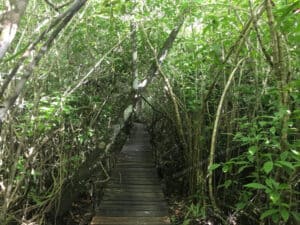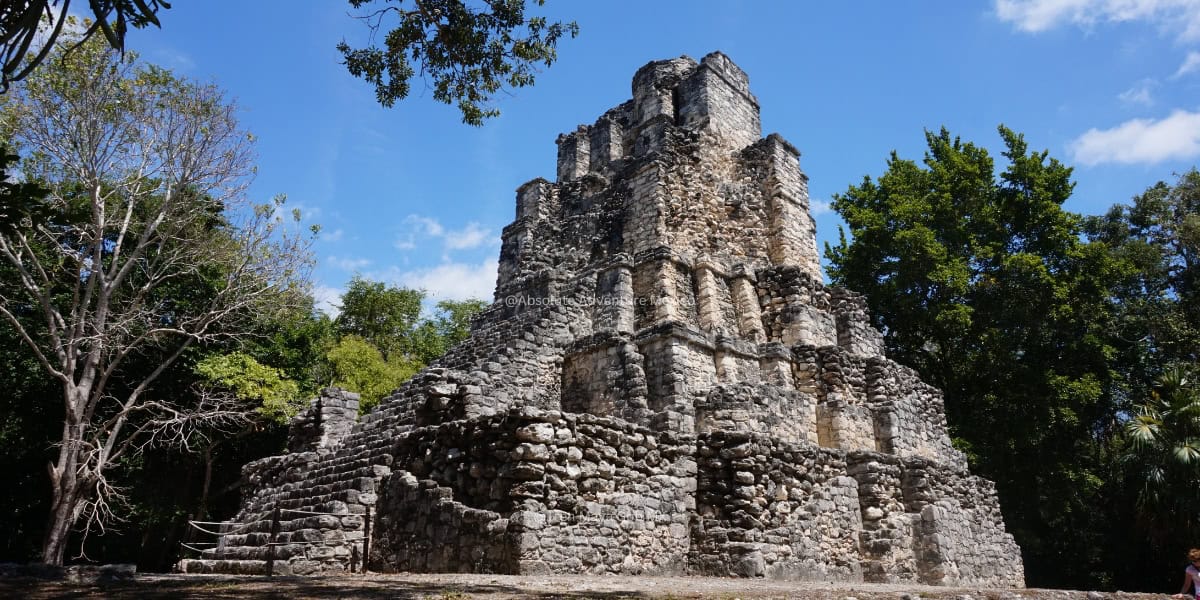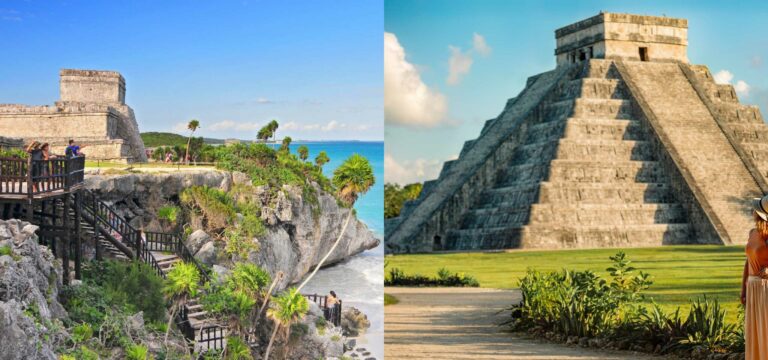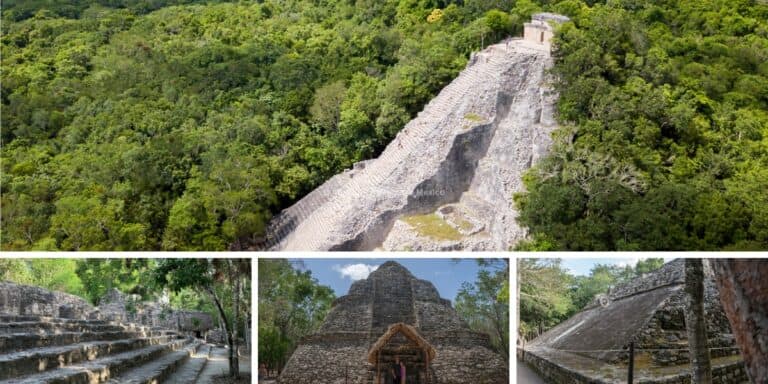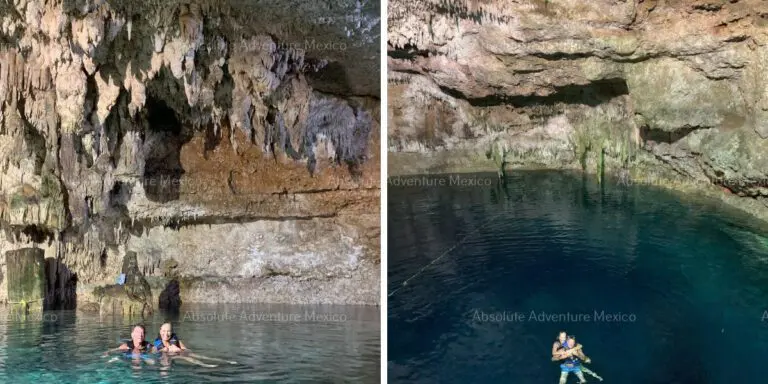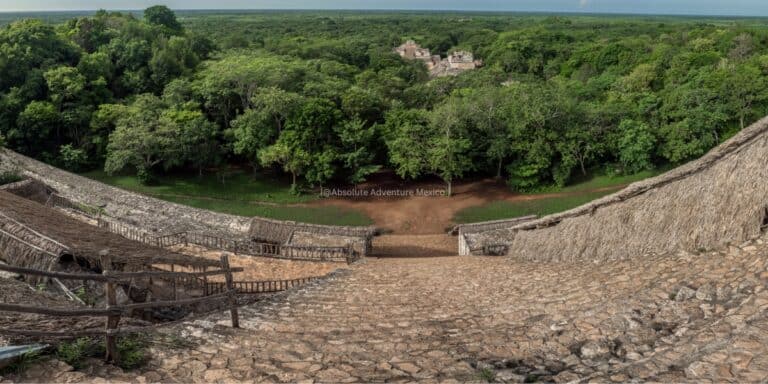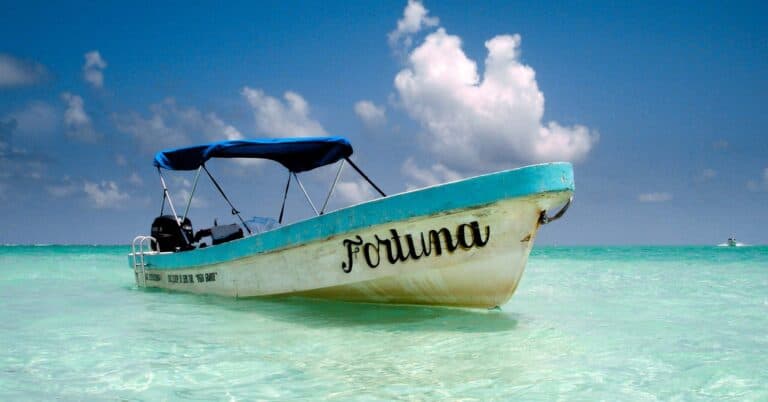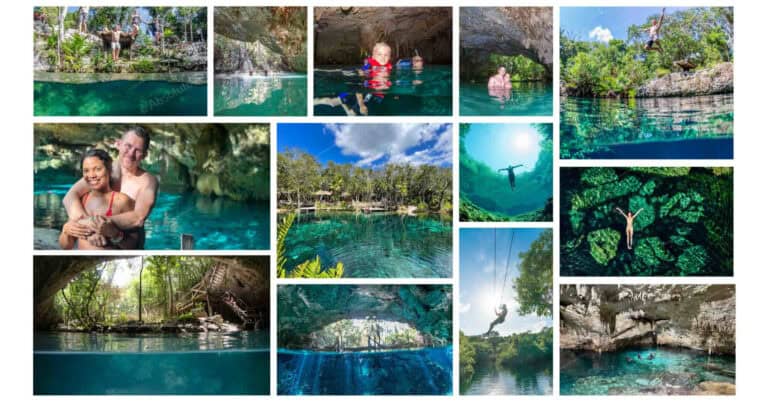Tucked along the edge of the lush Sian Ka’an Biosphere Reserve in the Riviera Maya, the Muyil ruins offer an off-the-beaten-path experience for travelers seeking authentic history and stunning natural landscapes.
With soaring temples, jungle trails, and a deep connection to Mayan trade and spirituality, Muyil is a peaceful alternative to the more crowded archaeological sites of the Yucatán Peninsula.
Whether you’re fascinated by ancient history, love nature, or simply want to explore a quiet and meaningful part of the Riviera Maya, Muyil is a site worth visiting.
Muyil Ruins Guide
Where Is Muyil?
The Muyil ruins are located in Quintana Roo, Mexico, just off south of Tulum. Nestled beside a freshwater lagoon in the northern part of the Sian Ka’an Biosphere Reserve, Muyil is one of the most accessible Mayan sites near the coast, yet it remains largely untouched by mass tourism.
Because of its location near the wetlands and lagoons of Sian Ka’an, the area also offers great opportunities for eco-tours, birdwatching, and boat rides through ancient Mayan trade routes.
Getting to Muyil
Muyil is easily accessible by car from all major Riviera Maya towns via Highway 307, which runs along the coast. The highway is in good condition, and signage for the Muyil entrance is clearly visible just south of Tulum.
- From Tulum, it’s a short drive of about 12 miles (20 km), taking around 25 minutes.
- If you’re coming from Playa del Carmen, expect a drive of approximately 54 miles (86 km), or about 1 hour and 15 minutes.
- From Cancún, Muyil is roughly 95 miles (150 km) away and takes a little more than 2 hours by car.
The Origins of the Muyil Site
Muyil, also known as Chunyaxché, was one of the earliest and longest-inhabited ancient Maya sites along the eastern coast of the Yucatán Peninsula. Its roots trace back to as early as 350 BC, with continued occupation through the Postclassic period until around 1500 AD.
The site’s location beside a lagoon allowed it to thrive as a key trading center, connected via a series of canals to the Caribbean Sea. Archaeologists believe Muyil was an important link in the coastal trade route, dealing in products like jade, obsidian, salt, honey, and textiles.
History and Highlights of the Muyil Ruins
Muyil’s history spans over a thousand years and reflects the evolution of Maya civilization through various periods. The site shows architectural influences from the Petén style, common in Guatemala, with tall stepped pyramids and intricate carvings.
Notable Structures:
El Castillo: The tallest pyramid at Muyil, standing at 17 meters (56 ft), rises above the jungle canopy and was likely used for religious or ceremonial purposes.
Temple Platforms: Smaller temples and altars are scattered throughout the site, used for offerings and rituals.
Sacbé (White Road): A well-preserved ancient Mayan road that leads through the jungle to the Muyil Lagoon, offering a scenic and historical walk.
Muyil’s proximity to water sources and fertile land also contributed to its long-term success, and many findings suggest it was a spiritually significant site connected to the natural world.
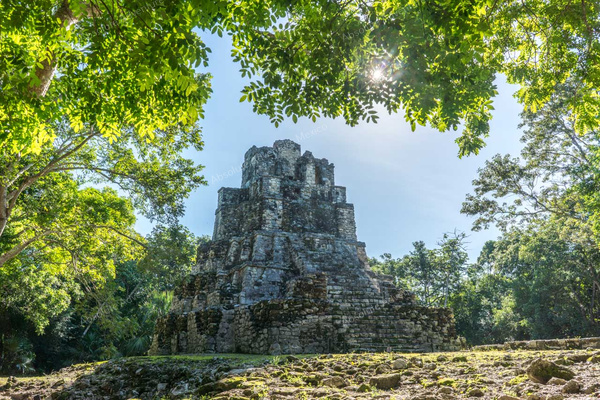
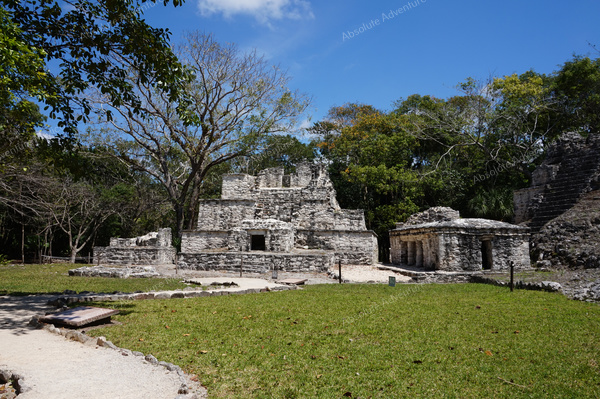
Practical Information to Visit Muyil
✅ Opening Hours: Daily from 8:00 AM to 5:00 PM
📅 Due to current restoration efforts at the Muyil ruins, the site is temporarily closed.
🎟️ Entrance Fee: Around $100 MXN per person (approx. $5 USD), additional fee for access to the lagoon trail.
🥾 Tips for Visitors:
- Wear comfortable shoes for walking on uneven paths.
- Bring insect repellent—especially if visiting the lagoon trail.
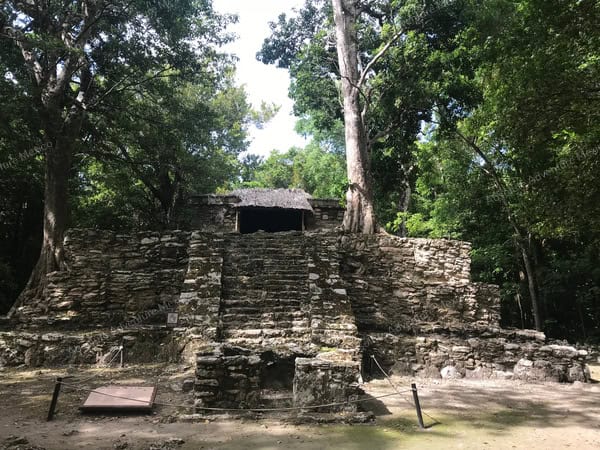
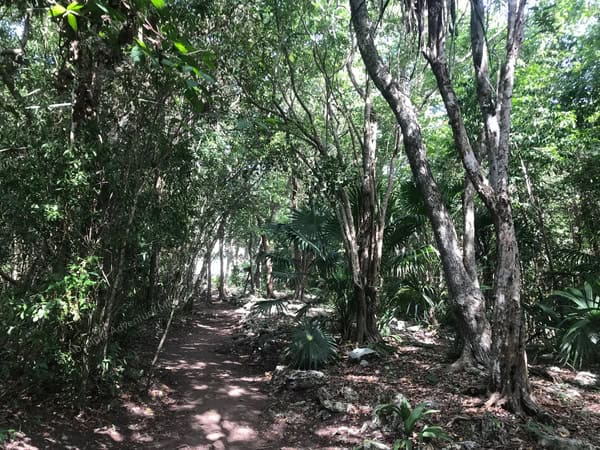
Discover the Peaceful Beauty of Muyil, Tours to Muyil
If you’re looking for a quieter alternative to the larger Mayan sites, the Muyil ruins offer a peaceful and meaningful escape. Walk in the footsteps of ancient traders and explore sacred pyramids surrounded by jungle.
Join Absolute Adventure for a private tour to Muyil and experience a side of the Riviera Maya that’s rich in history and natural wonder.
At Absolute Adventure, we offer a private tour to Muyil that blends culture, nature, and relaxation—without the crowds. Our itinerary is carefully crafted to let you enjoy some of the Riviera Maya’s most beautiful inland spots in one smooth experience.
Our private tour begins with a guided visit to the Muyil archaeological site, where you’ll explore ancient temples and learn about the history of this important Mayan trade center.
After the ruins, we head to the stunning Laguna Kaan Luum—a shallow, turquoise lagoon with a deep cenote in the center, perfect for swimming and relaxing.
Next, we take you to Cenote Corazón del Paraíso, a heart-shaped open-air cenote surrounded by jungle, where you can swim or snorkel in crystal-clear freshwater.
The tour finishes with a relaxing lunch in the center of Tulum, where you can enjoy local flavors in a comfortable setting.
This tour is ideal for couples, families, or small groups looking to combine archaeology, nature, and swimming in a single, stress-free day.
FAQ – Visiting the Muyil Ruins
Is Muyil worth visiting?
Yes! Muyil offers a unique blend of archaeology and nature. It’s one of the most tranquil and historically rich sites on the Riviera Maya.
Can you climb the pyramid at Muyil?
No, climbing is not allowed to protect the structures. However, you can get very close to the temple. If you are interested in climbing pyramids, we recommend the Ek Balam Ruins.
Is Muyil good for kids?
Yes, the site is easy to walk and less crowded, making it suitable for families.
How long does a visit take?
Plan about 30 to 45 minutes for the ruins.
What facilities are available at Muyil?
What’s the best time of year to visit Muyil?
From November to April for cooler temperatures and less humidity/rain. Mornings are best to avoid heat.
What can I expect from the Muyil jungle trail and mirador?
The Muyil site features a peaceful jungle trail following the ancient Mayan sacbé (white road), leading to a small mirador (lookout tower) overlooking the lagoon and surrounding forest. The walk is generally easy but be aware that the trail can be flooded during rainy seasons, and there are often many mosquitoes, so insect repellent is highly recommended.
The mirador is a small wooden structure built quite high, so always check that it feels stable before climbing. For safety reasons, only 3 to 4 people are allowed on the mirador at the same time, and climbing is prohibited when others are descending to avoid accidents. There is no mobile network coverage in this area, so be extra careful when climbing and descending to prevent falls.
This lookout offers stunning panoramic views of the lagoon and jungle canopy—a great spot for photos and quiet reflection, provided you take these precautions seriously.
Are there cenotes at Muyil ruins?
There are no cenotes directly at the Muyil ruins, but several are located nearby along the road between Tulum Muyil. Two popular spots are Cenote Corazón del Paraíso, an open-air cenote surrounded by jungle, and Laguna Kaan Luum, a large shallow lagoon with a deep cenote in the center, ideal for swimming and relaxing.
The floating river near Muyil (part of the Sian Ka’an canals) is not a cenote and cannot be accessed for swimming directly from the Muyil ruins. To float in the canals, visitors must join a separate boat tour departing from the nearby lagoon dock.
Is the floating river experience part of a visit to Muyil?
No, the floating river (or canal float) is part of a separate eco-tour inside the Sian Ka’an Biosphere Reserve, accessible by boat from the Muyil lagoon. While it starts near the Muyil area, it is not included in a standard visit to the Muyil ruins.
